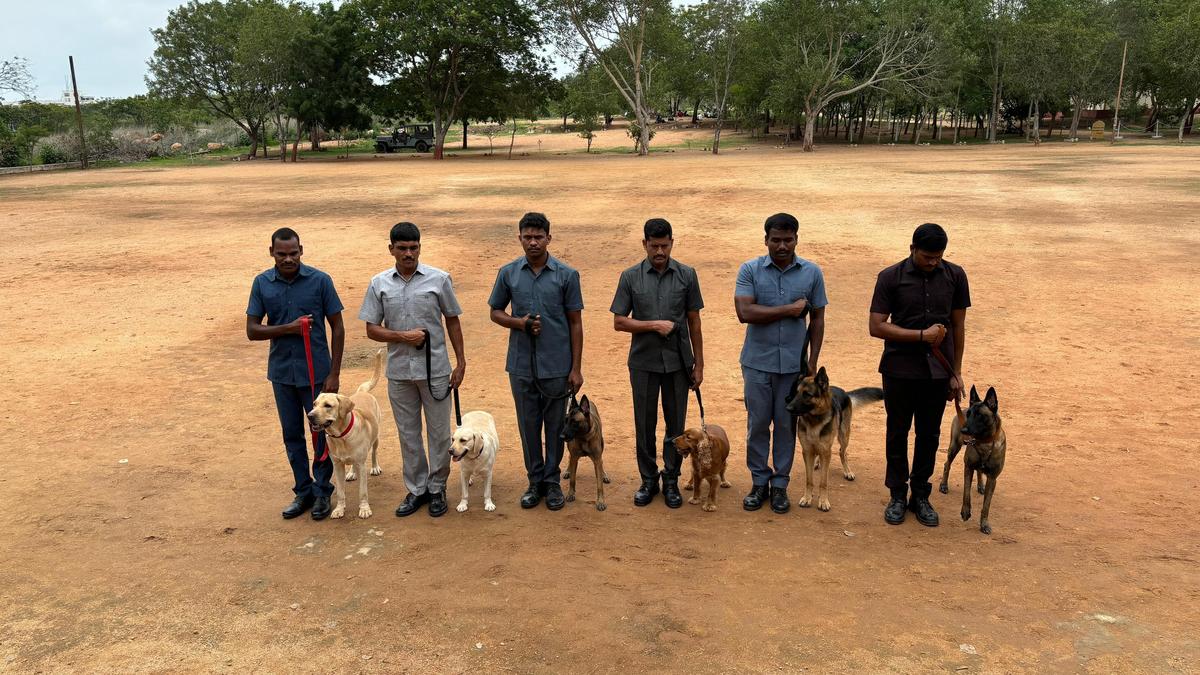A seven-year-old Belgian Malinois, named Diana by her handler, cracked a murder mystery in a matter of 10 minutes at Arjuni village of Adilabad in June. Diana sniffed the stone with which the man was bludgeoned to death and walked straight to his wife, the kingpin, who was standing about 50 feet from the body amid 150 locals. The dog even found the victim’s bike that was parked on the main road before he was attacked.
Jadav Gajender, 40, a teacher from ZP High School, Mediguda-K, was killed in broad daylight on the first day of school post summer vacation on June 12. The murder, planned by his wife and her paramour, was committed by two hired killers. The four accused were arrested and remanded the same day, thanks to the prompt detection by Diana, a veteran canine of the Telangana police force.

“Gajender’s wife Vijaylaxmi Jadav, along with the two hitmen, dragged him off his bike and bludgeoned him to death. While the two men fled, his wife wiped herself clean and ‘donned’ the role of a grieving widow. She was least suspected,” said P.
Ramesh, Head Constable in-charge of the sniffer dogs squad in Adilabad. Diana is among the 771 dogs trained at Moinabad’s Integrated Intelligence Training Academy (IITA) since its inception in 2006. It had trained 1,104 handlers so far.
The academy, located about 30 km from Hyderabad, is training 72 canines and about 100 handlers from across the country, including 20 from Bihar Police, in its 24th batch. The breeds include German Shepherd, Labrador, Belgian Malinois and Cocker Spaniel, trained for VVIP events, bandobust duties for ministers and regular police operations. 40:60 ratio While the breed, gender and count, per batch, depends on the demand from various commissionerates across the State, there is usually a 40:60 ratio of female to male canines.
“Females are generally sharper, more focused and agile, which make them the preferred choice for assault and sniffer operations, while males are great trackers,” said Assistant Reserve Sub-Inspector Srinivasa Mishra, who has hit the silver jubilee mark in his service and is currently training his last batch before retirement in the next six months. Puppies are ‘sourced’ from a breeder selected during the bidding process after the academy floats a public tender at the beginning of every year. An elaborate selection procedure including confirmatory health tests is done before the batch is finalised.
Training During their eight-month training, between June and February every year, the canines stay at their luxurious three-room houses, featuring a bedroom, a room for walking and a washroom, located in straight barracks along the head of the large green training ground. The first two months are for love and affection, next two for training and the rest for making them acquire skills on categories of combat, including narcotics sniffing, explosive sniffing, assault and tracking, IITA DSP K. Aravind Rao said.
During the first few weeks of their time in the academy, efforts are made to understand the dog’s signs and needs before making it understand human commands. For this, the handlers stay with their respective canines in their barracks and bond with them at a deeper level. The handler assigned on day one remains constant throughout the canine’s service in the police force, often ranging between 8-10 years.
“Savdhaan! ” the command goes and the seven, including all-India police duty (narcotic cadre) silver medalist Rolex, 2, Shadow, 2, Gracie, 2, Rambo, 2.3, Rado, 2.3 and Rudra, 2.
4, stood alert waiting for their next command. ‘ Baitho’, ‘letho’, ‘tham’ and ‘roll’ are among the commands used to train. While one might be tempted to pet or feed them, the only person who truly has the right to the canine is its handler.
“Right from naming the puppy to adopting the canine after it retires from service, the handler is given the first priority,” Mr. Mishra said. The academy also features an in-house veterinary hospital with dedicated ultrasound room, test labs, pharmacy and consultation ward, where the canines undergo yearly medical check-up.
Every canine has its individual ‘K9 maintenance register’ in which every activity is recorded throughout their service. With the rising drug menace and more demand coming in from the commissionerates and districts, more dogs are being trained for sniffing out narcotics with scent kits. Labradors and German Shepherds are the best suited for this cause, Mr.
Aravind added. Currently, narcotic detection dogs can be seen in full force across the city performing random checks in kirana stores, pan shops, restaurants, cafes, bars and other establishments. Copy link Email Facebook Twitter Telegram LinkedIn WhatsApp Reddit.



















